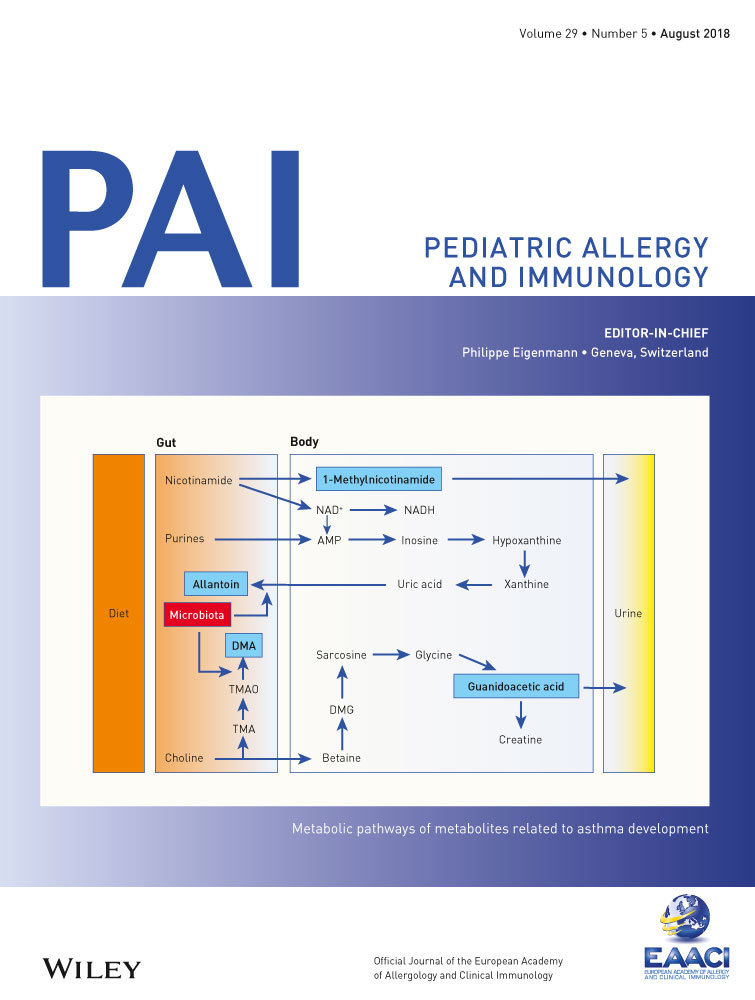Longitudinal urinary metabolomic profiling reveals metabolites for asthma development in early childhood
Funding information
This study was financially supported by research grants of CMRPG2G0651, CMRPG3E1191-5 and CMRPG2E0301 from the Chang Gung Memorial Hospital, Taiwan, and MOST 105-2314-B-182A-117 of the Ministry of Science and Technology in Taiwan.
Abstract
Background
Several metabolites and altered metabolic pathways have been reported to be associated with asthma. However, longitudinal analysis of the dynamics of metabolites contributing to the development of asthma has not yet been fully clarified.
Methods
We sought to identify the metabolic mechanisms underlying asthma development in early childhood. Thirty children with asthma and paired healthy controls from a prospective birth cohort were enrolled. Time series analysis of urinary metabolites collected at ages 1, 2, 3, and 4 years was assessed using 1H nuclear magnetic resonance (NMR) spectroscopy coupled with partial least squares discriminant analysis (PLS-DA). Metabolites identified were studied in relation to changes over time in a linear mixed model for repeated measures.
Results
A total of 172 urine samples collected from the enrolled children were analyzed. Urinary metabolomics identified four metabolites significantly associated with childhood asthma development, with longitudinal analysis. Among them, dimethylamine, a metabolite produced by intestinal bacteria, appeared to shift from higher to lower level during asthma development. A persistent lower level of 1-methylnicotinamide and allantoin was found in children with asthma, with a peak difference at age 3 years (P = .032 and P = .021, respectively). Furthermore, a significant inverse correlation was found between allantoin and house dust mite sensitization (Spearman’s r = −.297 P = .035).
Conclusions
Longitudinal urinary metabolomic profiling provides a link of microbe-environment interactions in the development of childhood asthma. 1-Methylnicotinamide and allantoin may participate in allergic reactions in response to allergen exposure, potentially serving as specific biomarkers for asthma.
CONFLICT OF INTERESTS
The authors declare that they have no conflict of interests.




